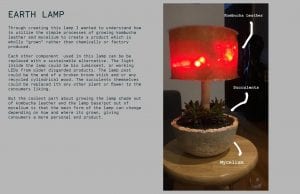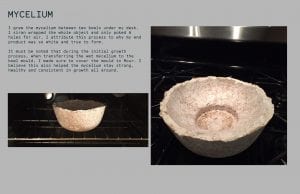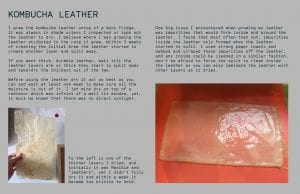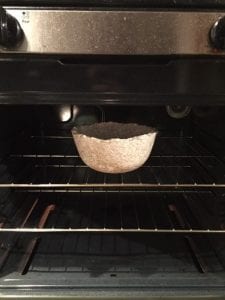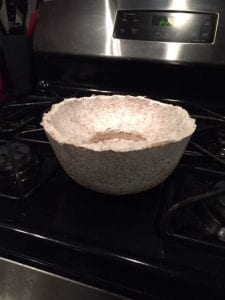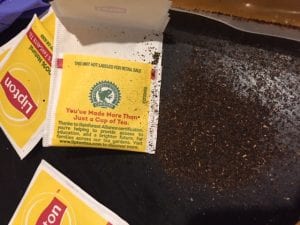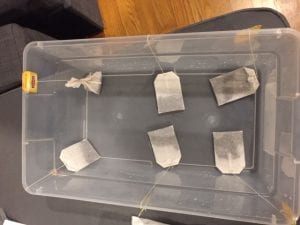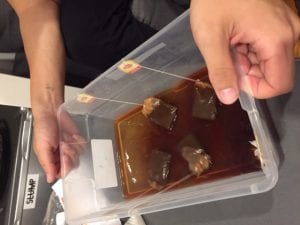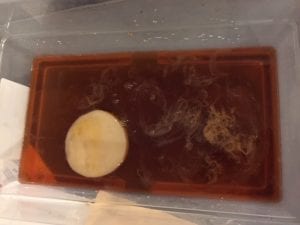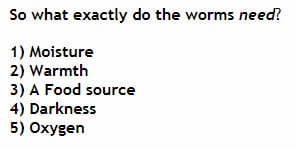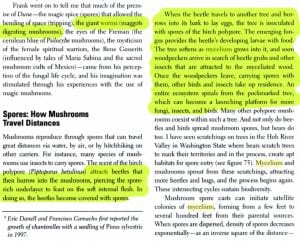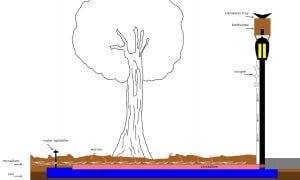Category: Uncategorized
Five Big Ways the United States Will Need to Adapt to Climate Change
This article by Brad Plumer, raises many difficult to swallow steps that America will need to take in the decades ahead in order to adapt and survive during climate change and the inevitable disasters it will cause. Rethinking how we farm is a major step, yet this is a step that is already being worked on and innovated as we speak. Alternative protein sources and lab-grown substitutes are already on the market and becoming more accessible as the days go on, it’s only a matter of time till America full accepts these alternatives, but the fact this change is already in motion is a good sign. Building for the future is another major step, but a step that has only just become relevant, as speculative design and design for the worst case scenario is only now being taught and advocated. This step will take some time before it is understood in society, as it takes some major rewiring and changes in thinking to plan for a future that doesn’t exist, instead of designing based on the past, which society is built upon (the past). Retreating from the coasts is an inevitable and sad fact of the reality we live in. I was exposed to this sad reality pretty recently as my family has a beach house on the great ocean road on the coast of Australia. Here I saw The Twelve Apostles, a collection of limestone stacks off the shore of the Port Campbell National Park, crumble one by one everytime I went to visit. This was a vivid and honest portrayal of the impact climate change is having on the world, and this change has happened in only a matter of years. Moving away from the coasts is a smart and practical step to take, especially with rising sea levels. Enlisting nature to help is a great method to control the destruction of climate change. It’s been proven that certain fungai can clean up oil spills and toxic waste, and trees can help clean the atmosphere. With many companies creating tree-planting benefits or systems to encourage awareness and participation in trying to slow down the damage of climate change, it’s increasingly apparent that people are beginning to care and they are wanting to give back to mother earth by helping rebuild and replace what we took from it, as well as using it to help us repair our damages. Of course, all these steps are just speculative, and only time will tell if these will actually help in the long run. All I can say is that these steps are definitely a step in the right direction.
Why climate change photography needs a new look?
http://www.bbc.com/future/story/20181115-why-climate-change-photography-needs-a-new-look
This article by Diego Ortiz, was very eye-opening regarding the psychology behind how people view climate change. Visuals play a huge role in this, and Ortiz emphasizes this notion in his article. Much of a person’s early exposure to climate change has been through stock images showcasing pollution excreted into the air, or sob stories about losing the polar bears or sea levels rising because of melting ice caps. Although these are viable issues and ones with real-world consequences; for many, these are issues they can simply avoid, as they don’t see these issues immediately affecting them, so why take immediate action or care. Why care about those polar bears, animals i’ve never seen before, that are dying, in a place, I’ll never see. Why care about the rising sea levels, when I live in a state in the center of the country, lacking access to the coast. It isn’t until we humanize the visuals, and bring visuals that don’t seem too far from reality, where people react and new-found climate change care is conveyed. This is the sad reality of the climate change situation, where we need to show humans dealing with bleak situations before people notice and are aware of the true dangers, but at least we are aware of this and can start to educate people about climate change in a more empathetic manner.
Global Food System Is Broken?
https://www.theguardian.com/environment/2018/nov/28/global-food-system-is-broken-say-worlds-science-academies?CMP=Share_iOSApp_Other
This article by Damian Carrington mentions many valuable facts about why the global food system and industry is broken but doesn’t really raise any new ideas. The disparity in food access and pricing between countries around the world is something I’ve been exposed to in real time, so i’ve understood the price differences and quality of the food I access and obtain in America, compared to Australia and Indonesia for example. The article was great in maintaining awareness of this subject matter, yet didn’t delve too heavily in ways to fix or restore balance in the global food system until the very end of the article where Carrington mentions growing “crops that are more resilient to climate change, smarter crop rotation, soil protection, precier use of fertilizers and less use of pesticides.” He also mentions how academics support the innovation of laboratory-grown meat and insect-based foods. I believe if Carrington had delved deeper into the ways as society we can help mediate such a broken system, the article would give a stronger response and call to action, rather than just mentioning something many of us had already assumed is the truth; that western countries waste too much food and less fortunate countries have access to less food. The mention of alternative protein sources like lab grown meat and insect based foods is an extremely important point and should’ve been expanded upon further. As having eaten both crickets on my waffles and the impossible burger, I can wholeheartedly say that if these products were more accessible and readily available to purchase, I’d often find myself substituting my usual meat purchases with these alternatives. Focus on raising awareness of these protein alternatives should be a priority in the transformation of a more sustainable and food balanced world, as these are changes that can easily be adjusted and utilized in an average persons life and it’s a fix that doesn’t deal with politics, consumerism or major food community issues.
What should I do with my broken kettle?
https://www.bbc.com/news/business-45969676
This was a very interesting article as its a question that always permeates my mind during hard rubbish collection day. There are so many products I hold on to because I don’t know where or how to trash them. As an audiophile and music producer, When it comes to the Gerrard Street Headphones subscription model, it actually sounds highly practical. The amount of headphones I got through because the foam becomes damaged, or a chord falls out, is highly cost inefficient. To replace the foam as it becomes damaged, and replace the chord when needed would save huge amounts of money in the long run and be more eco-friendly and practical because why throw away the headphones when all the components but one don’t work, it makes more sense to replace that single component. My roommate has been doing this modular system with his headphones for years, although not necessarily a perk of the headphones he buys. The headphones themselves are close to $500USD, so when a chord breaks, he usually purchases an aux cable online and soulders and glues this chord to the damaged part. For a company to build their product around this system is a win win for everybody and prevents the haphazard tinkering my roommate has to do, with a simple dispose and swap.
Kombucha Leather (Part 2)
After the scoby spent two days drying, i thought it was done and was pretty happy with the texture. It was as thin as paper but reacted like a nice leather, however as I let it sit on my desk for a week I noticed it became drier and drier each day
The drier it became, the more brittle it became. In the future, i’m going to leave the scoby in the mixture for at least 3 weeks before drying it out.
Hopefully I get the thin leather result I sought after in my next update.
Mycelium Material
I forgot to take process pictures, however, I decided to mold my mycelium mixture into a fruit bowl. I was quite concerned about the mycelium as the mixing process wasn’t as sanitary and hygienic as I’d liked, however, the results superseded my expectations. The only concern I have is about the base thickness of the bowl as it wasn’t as thin as i’d hoped. Regardless this makes for a lasting bowl and great experiment.
Kombucha Leather (Part 1)
Growing Kombucha leather seemed easy until I began going through the process. Within mintues of simply opening the tea bags I ripped one completely open, sending tea flying EVERYWHERE.
A small snag, I found another pack of old tea and emptied that, creating a new bag to fill with the original tea. Pictured in the top left corner.
I boiled the water and let the tea darken.
Then proceeded to add the sugar and mix until dissolved with a fork.
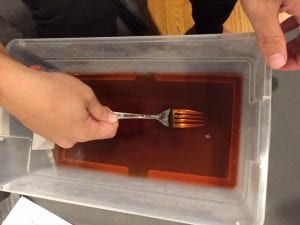
The hardest and most concerning part about this process what getting the temperature right before we put the komchua scoby in. This took 20 minutes as I regularly checked the temperature with a thermometer.
Pictured below is the Kombucha mix a week later.
“This Changes Everything”
Naomi Klein does not view the leading “climate deniers” as bigots; she considers them to have settled on a critical decision to protect the fossil fuel industry for greed, perhaps, but also to maintain jobs for many of the workers who’ve sacrificed plentiful to keep this work. However, she alludes to the disconnect between workers, people and their government. People blame the workers on many of the issues that trailing, and oil pipelines create, yet for the most part, many of these workers dislike the impact they’re making on the environment and hope their employers’ transition into more environmentally friendly alternatives. Klein is honest in her impetus: she is of a democratic socialist orientation, has been slow in completely understanding climate change because of the human/animal disconnect (diminishing polar bear numbers aren’t enough to convince me there’s a climate issue), however it wasn’t until Klein was exposed to more of the issues climate change creates for humans that she decided to deduce that climate change is an actual issue not only effecting animals, but our consumer society, farm communities and even major cities. Klein recommends that we should transform the non-renewable energy source organizations into open utilities, thinking that we should leave most of what’s left of fossil resources in the ground, while applying the benefits gathered from consuming our residual carbon apportions to the change into sustainable power sources. She affirms that this is 100% achievable on a brief timeframe scale. Whether this helps, only time will tell; but this would definitely be a step in the right direction.
Lets help the birds, worms and trees…
The other week whilst wandering around Tompkins Square Park I noticed quite a few birds playfully gliding around the trees. This got me thinking about what they would need to maintain a comfortable existence.
Comfort comes from the food they can access and the places they can nest.
So this initially got me thinking about worms.
I looked into the conditions in which worms thrive and procreate and they are as follows (in no particular order).
Many of these conditions were similar to those we discussed when growing mycelium…
so I sought to find resources which verified if worms can flourish in a mycelium mixture… although I didn’t find a concrete answer. The reference I did find likened worms to maggots, and then proceeded to maintain that beetles could populate the mycelium. Regardless I went on a whim and decided that Mycelium would be a suitable environment for an amalgamation of insect and bug populous as long as it had regulated oxygen, warmth, and moisture.
now you might ask “AJ how do you suppose you can regulate oxygen, warmth, and moisture” and I can’t say this would work for sure but I found some recent research regarding a new crystalline material which can store huge amounts of oxygen in small quantities.
So using all this research I came up with a design for a somewhat self-sustaining ecosystem.
This is how it would function:
The rain would fall onto the mycelium mixture. Any excess water that doesn’t get distributed by the mycelium network would interact with the crystalline material forcing any stored oxygen out into the mycelium mixture. Any excess water after that could be stored in a small water tank connected to a tap or sprinkler for easy distribution. We could build a small and flush turbine piping system against park lights or poles which would flow oxygen down underground into the crystalline substance maintaining that it is always full of oxygen. As an added bonus the installation of shaded and noise proof birdhouses on top of this piping system would give birds a place to nest and enjoy the inevitable bug buffet that would form below. The mycelium would also break down any plastic left around thereby creating a safer environment for birds and animals to forage in the city.
References:
https://phys.org/news/2014-09-material-oxygen-air.html
https://www.mycopolitan.com/for-agriculture/
https://books.google.com/books?id=NPI8_-omzvsC&pg=PA123&lpg=PA123&dq=mycelium+attracts+worms?&source=bl&ots=3bmE1Xcj_F&sig=uKUD8gmo1fUvmR03tHOXWI–rEU&hl=en&sa=X&ved=2ahUKEwiks725gP3dAhWEwVkKHbNYB0sQ6AEwD3oECAEQAQ#v=onepage&q=mycelium%20attracts%20worms%3F&f=false
